The Inventors of Things
Introduction
Inventors live forever. They must be given credit for their obedience to science and lifetime dedication to aiming for discoveries that serve to improve human life on planet Earth. In the present article, we look at some inventors and scientists from different eras, mostly having their work in the area of electrical engineering and computer science. These two domains represent the fundamental pieces for almost any electrical device nowadays, especially for embedded systems with wireless communication capabilities known as the Internet of Things devices. Each IoT device consists of a blending between hardware and software and provides a solution to a problem as well as drives innovation within an industry.
The inventors presented here are pioneers in their fields and they invented remarkable things that served as building blocks for the next inventors coming after them. In fact, they helped each other by paving the scientific and historic discovery road. Their common ground lies in their love for science. Historically seen the first pioneers of electrical technologies date back to the 19th century, the era of the second industrial revolution when electricity was invented and mass production was just starting.
Each of these scientists contributed to the development of a key technology that in some way serves today’s development of embedded systems and IoT products, which became a mainstream term in the modern age.
They also serve as role models and inspiration for me and I admire them a lot because of their creativity and resilience.
Let’s have a look at some inventors from the past and today, that changed the course of history in terms of technological discoveries and advancements.
George Boole (1815–1864)
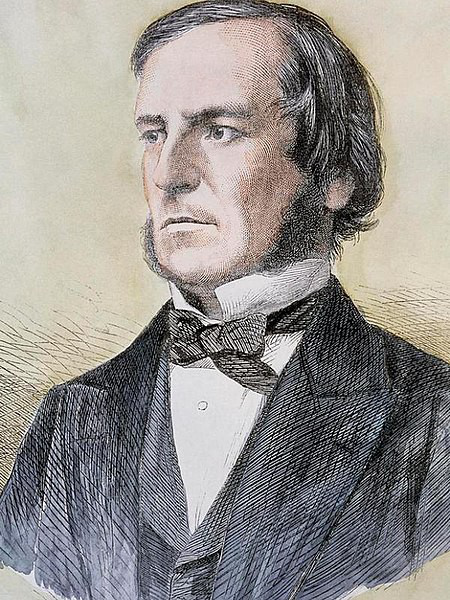
Photo Credit: Wikimedia Commons, George Boole
George Boole was a self-thought mathematician that worked in the fields of differential equations and algebraic logic. His book “The Laws of Thaught” from 1854 lays the foundation for the Boolean algebra and for the Information Age started in the mid-20th century. What is also fascinating about George Boole’s inventions and work is that it was rediscovered by several scientists almost a century later, when scientists like Claude Shannon recognized that Boole’s work could form the basis for mechanisms and processes in the real world. Digital computers are nowadays unimaginable without the use of electrical switches based on Boolean logic.
Nikola Tesla (1856–1943)
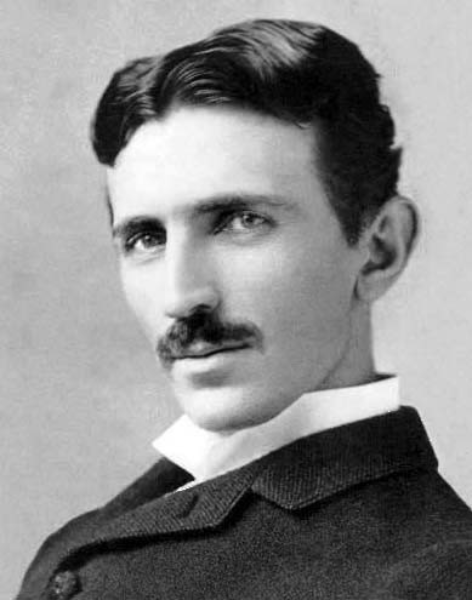
Photo Credit: Wikimedia Commons, Nikola Tesla
Nikola Tesla is maybe one of the greatest inventors of all time. His most known contributions to the design of the modern alternating current (AC) electricity supply system revolutionized the world we live in today. Moreover, he contributed significantly to the invention of the radio by filling several patents in the area of wireless communication, which was controversially used by Guglielmo Marconi, the acknowledged creator of the radio. One of his inventions worth mentioning is the “Telautomaton”, a radio-controlled boat that he hoped to sell as a guided torpedo to navies around the world. This could easily be considered the first “IoT” product with wireless capabilities from the pre-computer era.
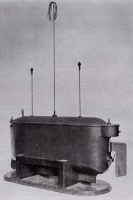
Photo Credit: Wikimedia Commons, “Teleautomation” from 1898
Guglielmo Marconi (1874–1937)
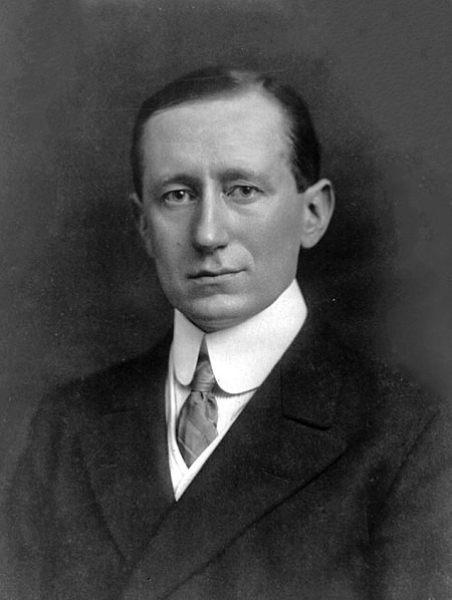
Photo Credit: Wikimedia Commons, Guglielmo Giovanni Maria Marconi
Guglielmo Marconi is known for the creation of the practical radio wave-based telegraph system. This groundbreaking achievement from that time wouldn’t have been possible without the work of his peers like Heinrich Hertz, Nikola Tesla, or Ferdinand Braun. Together with the latter one, he received the Nobel prize for physics and his most notable career achievement is the first public transatlantic wireless communication in 1903. Today, one precondition when building IoT devices is the wireless communication capability, an invention made over one hundred years ago.
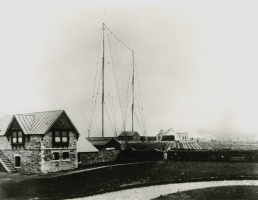
Photo Credit: Wikimedia Commons, Transmission antenna used for the first transatlantic wireless communication.
William Eccles (1875–1966)
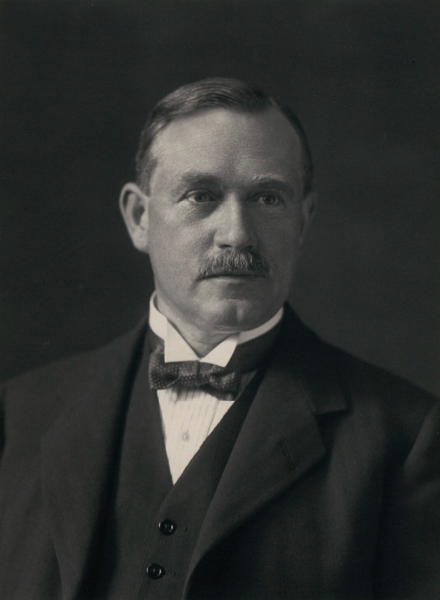
Photo Credit: Wikimedia Commons, William Eccles
William Eccles was a physicist and a pioneer in radio development and worked as an assistant for the Italian radio entrepreneur Guglielmo Marconi. Eccles invented the term Diode to describe an evacuated glass tube containing two electrodes: an anode and a cathode. Furthermore, he collaborated with Frank Wilfred Jordan in 1918 to patent the flip-flop circuit, which became the basis for electronic memory in computers.
Alan Turing (1912–1954)
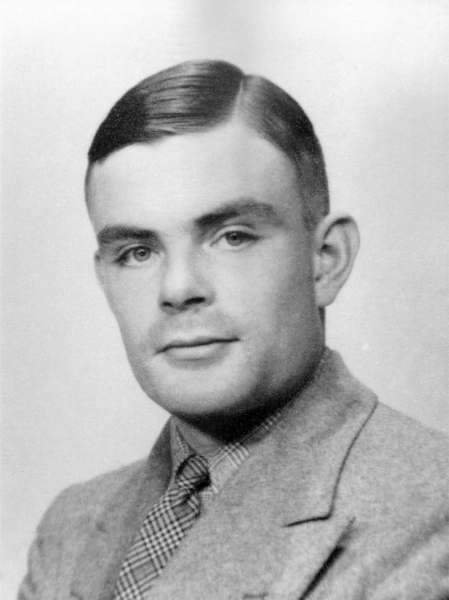
Photo Credit: Wikimedia Commons, Alan Turing
Alan Turing was a computer scientist and he is widely considered the father of theoretical computer science and artificial intelligence. He provided a formalization of the concept of algorithm and computation through his most notable invention, the Turing machine, which is considered a model of the general-purpose computer.
Carl Adam Petri (1926–2010)
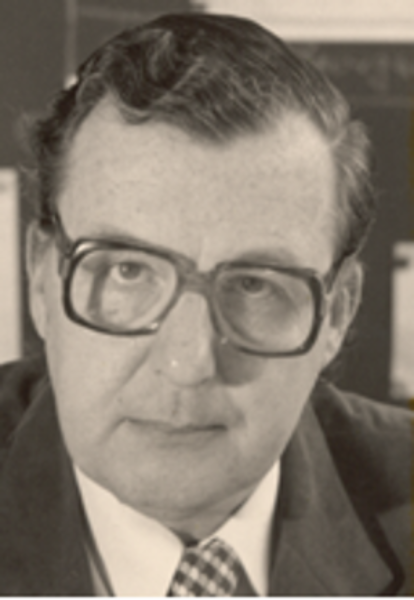
Photo Credit: Wikimedia Commons, Carl Adam Petri
Carl Petri was a computer scientist and his major scientific contribution is the concept of the Petri net, which he developed when he was only 13 years old. The documentation of his invention was done only years later as part of his dissertation “Communication with Automata”. His work advanced fields of parallel and distributed computing, and it helped define the modern studies of complex systems and workflow management systems. The applicability of the Petri net is found in a broad range of fields like Boolean differential calculus, concurrent programming, data analysis, game theory, and hardware design.
John von Neumann (1903–1957)
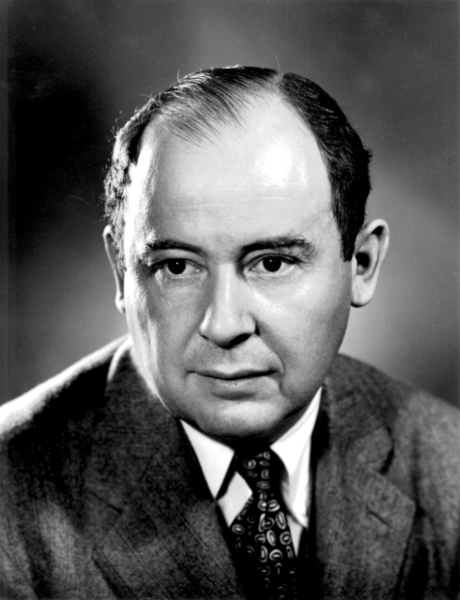
Photo Credit: Wikimedia Commons, John von Neumann
John von Neumann was a prodigy in his time being a mathematician, a physicist, a computer scientist, and an engineer. He is regarded as “the last representative of great mathematicians who were equally at home in pure and applied mathematics”. In computer science, he is mostly known for the invention of the von Neumann architecture, by which he elegantly described the components of an electronic digital computer containing the following components: processing unit, control unit, memory, external mass storage, and input and output mechanisms.
Howard Aiken (1900–1973)
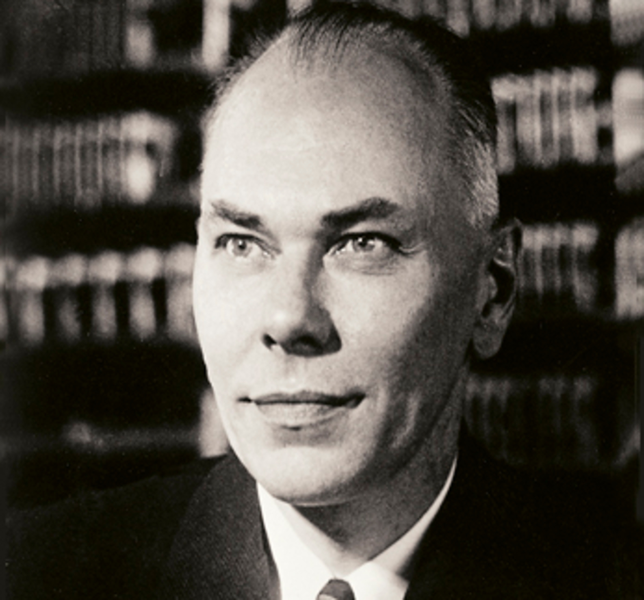
Photo Credit: MacTutor History of Mathematics
Howard Aiken was a contemporary of John von Neumann as well as a physicist and a pioneer in computing. His major contribution is the design of IBM’s Harvard Mark I computer, also known as the ASCC — Automatic Sequence Controlled Calculator. This was a general-purpose computer that was used at the end of World War II and the first to run a program on it was John von Neumann. The design consisted of electromechanical components and comprised a volume of 23 m3 and it was for sure the industry’s largest electromechanical computer. The computer was based on the Harvard architecture, which was an advancement to the von Neumann architecture, with instructions and data being separated and accessed independently.
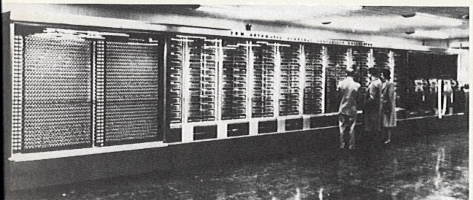
Photo Credit: Columbia.edu, IBM Automatic Sequence Controlled Calculator after installation at Harvard University, 1944.
Claude Shannon (1916–2001)
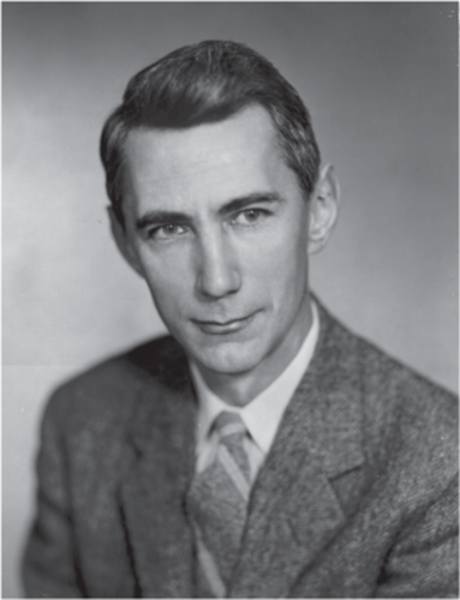
Photo credit: Claude Elwood Shannon 1916–2001 – James – 2014 – Bulletin of the London Mathematical Society – Wiley Online Library
Claude Shannon was a mathematician, electrical engineer, and cryptographer and he is regarded as the “Father of Information Theory”. At the age of 21, he demonstrated through his master thesis that the electrical application of Boolean algebra could solve any numerical relationship. Shannon’s thesis was called “possibly the most important, and also the most noted, master’s thesis of the century.” and is based on the work of the self-taught mathematics professor George Boole from almost one hundred years before. He used the power of electronic switches to implement logic and this is the fundamental concept that underlies all electronic digital computers. Another important achievement of his is the introduction of the sampling theory, which is concerned with representing a continuous-time signal from a uniform discrete set of samples. This mechanism is still used today in analog-digital converters and vice versa for signal acquisition from sensors and for signal reconstruction and output in form of image or sound for example.
Edward Forrest Moore (1925–2003)

Photo Credit: Edward Forrest Moore
Edward Moore was a professor of mathematics and computer science and he was an early pioneer of artificial life. He is mostly known for the invention of the Moore finite state machine, which is used in dozens of applications where a logical workflow is needed. Such applications are elevators, semaphores, and operating systems to name a few. He also worked together with Claude Shannon at Bell Labs on computability theory and built reliable circuits using less reliable relays. In the area of artificial life, he proposed the so-called “Artificial Living Plant”, which would be floating factories that could create copies of themselves. They could be programmed to perform some functions like extracting freshwater, harvesting minerals from seawater, etc.
Maurice Karnaugh (1924)
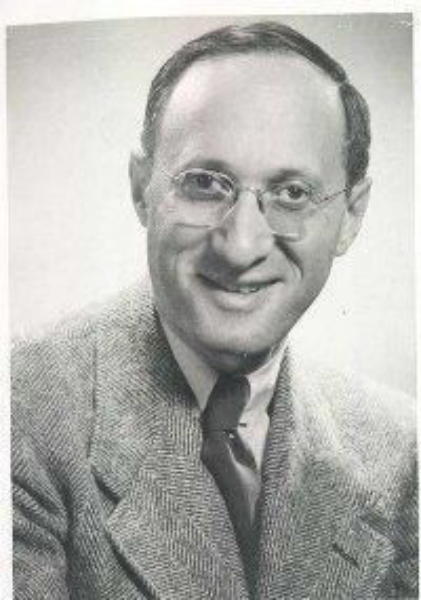
Photo Credit: Maurice Karnaugh – Alchetron, The Free Social Encyclopedia
Maurice Karnaugh is a physicist, mathematician, and inventor known for the Karnaugh map used in Boolean algebra. During his work at Bell Labs from 1952 to 1966, he invented the Karnaugh map (1953). This is a method for simplifying Boolean algebra expressions and it is a refinement and advancement of previous works from Edward William Veitch and Allan Marquand. Therefore, the Karnaugh map reduces the need for extensive calculations by taking advantage of the human’s pattern-recognition capability. The practical advantage is that it permits rapid identification and elimination of potential race conditions. In electronic circuitry, this is extremely helpful because it helps with eliminating glitches and false behavior. Besides this Maurice Karnaugh also contributed and filed patents in the area of PCM coding. Pulse-code modulation (PCM) is a method for digitally representing analog signals and it became the standard for the audio signals in digital computers.
Gordon Bell (1934)
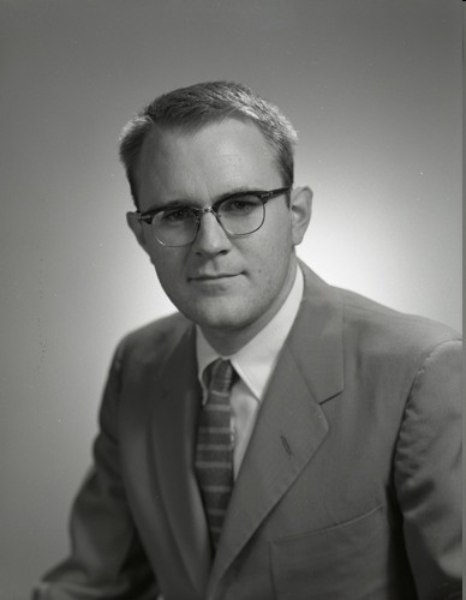
Photo credit: i-programmer.info
Gordon Bell was an electrical engineer and he designed the I/O subsystem of the PDP-1 computer, including the first UART. The Universal Asynchronous Receiver Transmitter (UART) unit is a well-established serial communication protocol used for communicating and debugging computers. The PDP-1 computer was the most advanced of its time and was the hardware for playing history’s first game on a mini-computer, Steve Russell’s Spacewar.
“Gordon Bell played a key role in the minicomputer revolution, and for contributions as a computer architect and entrepreneur.”
Charles Stark Draper (1901–1987)
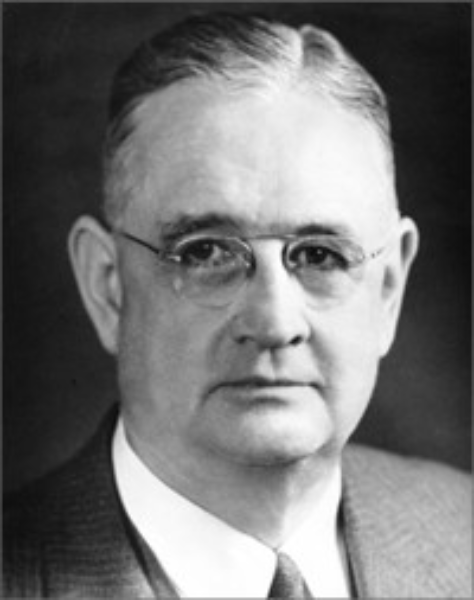
Photo Credit: history.aip.org, Charles Stark “Doc” Draper
Charles Stark Draper is known as the “Father of Inertial Navigation” and he was a scientist and an engineer. He is a pioneering figure in aerospace engineering and he contributed to the Apollo space program with his knowledge of guidance systems. For the Apollo program, he worked in the development of the AGC (Apollo Guidance Computer) for NASA in 1961, which is considered to be the first digital computer based on silicon integrated circuits (IC). The AGC was ready in 1966 and helped astronauts in landing no less than six times on the moon’s surface, with the computer being mounted in the Apollo Lunar Module. At the end of the 70s, this technology was used in commercial products like Apple II, Commodore PET 2001, or TRS-80 Model I computer.
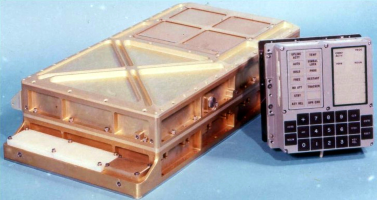
Photo Credit: The DSKEY input module (right) is shown alongside the Apollo Guidance Computer’s main casing (left).
Ray Holt
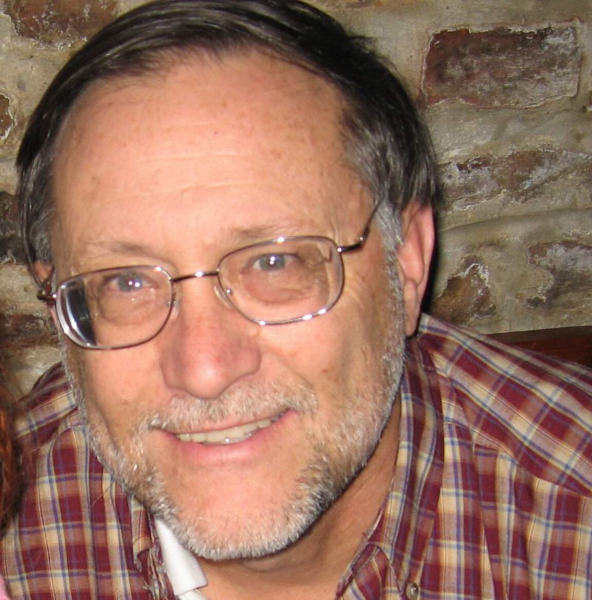
Photo credit: mississippirobotics.org/
Ray Holt is a computer designer and he is known for building the world’s first microprocessor chipset together with his brother Bill Holt. It was a 20-bit Central Air Data Computer (CADC) built for the F-14 Tomcat, a supersonic fighter aircraft. This achievement led to the development of the first commercial microprocessor chipset, the Intel 4004 as part of a series that build a complete system consisting of ROM (4001), RAM (4002), and I/O (4003) units. As president and co-founder of the Mississippi Robotics organization, Holt answered the question, of why the founding organization serves rural schools and ministries in the South: “Robotics does motivate rural students to go to college!”
Allan Alcorn (1948)
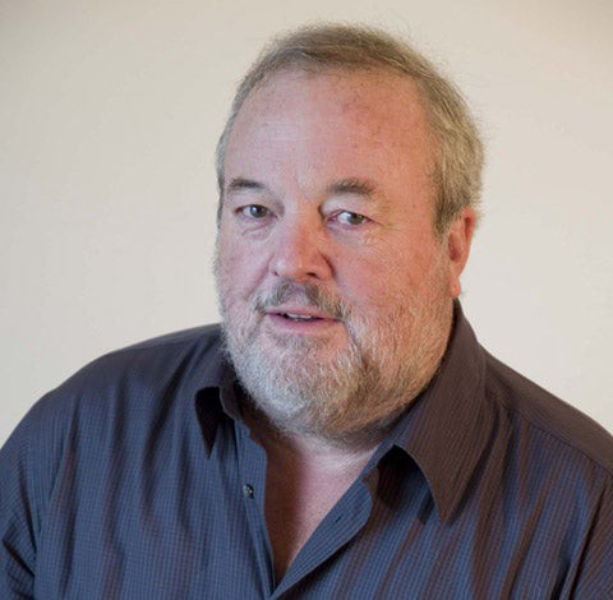
Photo credit: www.ign.com
Allan Alcorn is a pioneering engineer and computer scientist best known for creating Pong, one of the first video games. The game was created when he was working for Atari and it was a hit in the 70s. He is the guy hiring a little hippie, named Steve Jobs, at Atari in 1974 and later on participated in historical meetings with the founders of Apple when they presented their very first computer, Apple I.

Photo credit: en.wikipedia.org, Pong, the video game Alcorn designed
Ray Tomlinson (1941–2016)
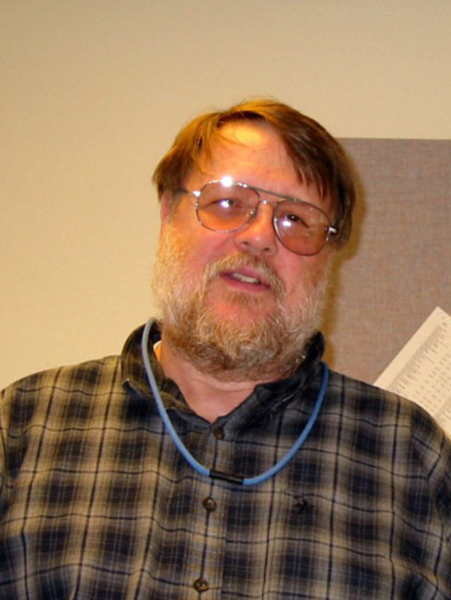
Photo Credit: Wikimedia Commons, Ray Tomlinson
Ray Tomlinson is a computer programmer who created the first email program on the ARPANET, the precursor of the Internet in 1971. It was the first system able to send emails between users on different hosts connected to the ARPANET. To separate the user from the machine name, he used the sign “@”, a scheme that has been used in email addresses ever since.
Martin Cooper (1928)
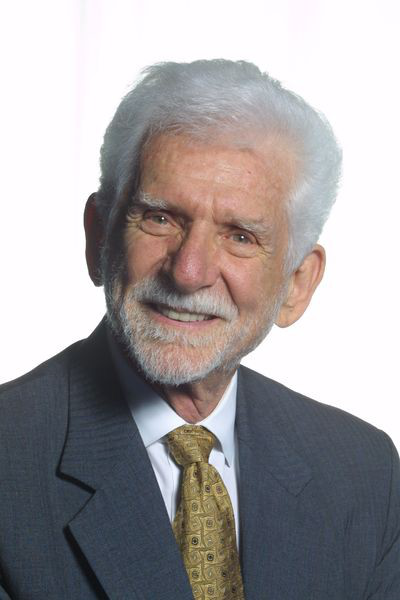
Photo credit: ethw.org/Martin_Cooper
Martin Cooper is an engineer and a pioneer in the wireless communication industry. In the 1970s at Motorola, he invented the first handheld cellular mobile phone and led the team that developed it to its commercialization in 1983. He is considered the “Father of the (handheld) Cell Phone” and is also cited as the first person in history to make a handheld cellular phone call in public, namely in 1973.
He got the Marconi Award in 2013 and this is another example of a historical linkage between inventors, with Marconi inventing the practical radio and Martin Cooper inventing the first practical cell phone 70 years later.
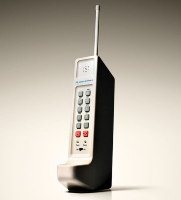
Photo Credit: pinterest.de, The First Cellphone was Motorola DynaTAC, built by Martin Cooper in 1973.
Roger Melen, Terry Walker, and Harry Garland
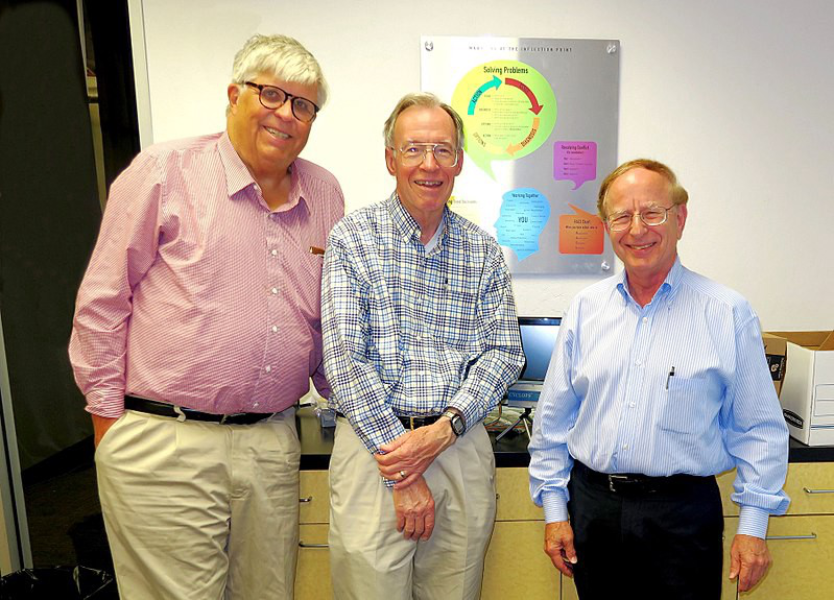
Photo credit: commons.wikimedia.org/wiki/File:Roger_Melen,_Terry_Walker,_and_Harry_Garland_at_CHM_(2017).jpg
The three above-mentioned scientists cooperated on the development of the first digital camera, introduced in 1975 by Cromenco. The camera named “The Cromenco Cyclops” was the first commercially all-digital camera using a digital metal-oxide-semiconductor (MOS) image sensor and was the first camera to be fully interfaced to a microcomputer. The camera had a resolution of 0,001 megapixels, which is around 40.000 times less than the solid-state digital camera of today.

Photo Credit: The Cromenco Cyclops camera
Steve Wozniak (1950)
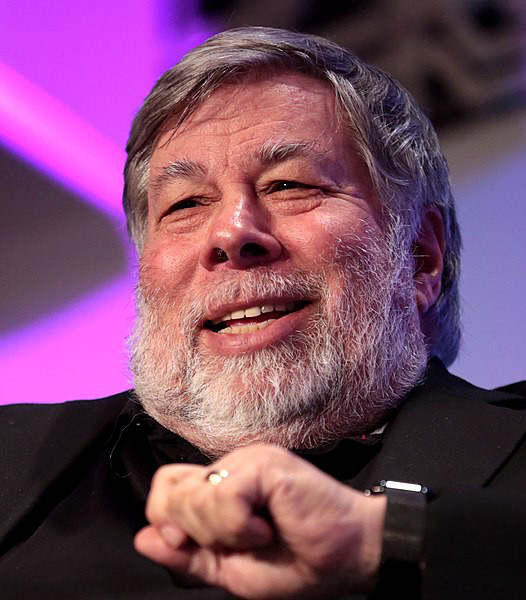
Photo credit: https://commons.wikimedia.org/wiki/File:Steve_Wozniak_by_Gage_Skidmore_3_(cropped).jpg
Steve Wozniak is an electronics engineer and a computer programmer, and together with Steve Jobs, he co-founded Apple in 1975. In the beginning, they created their first computer, the Apple I, which they tried to commercialize by promoting it at the Homebrew Computer Club. This was an early computer hobbyist group from California and had an influential role in the development of the microcomputer revolution and the rise of the Silicon Valley information technology industrial complex. After the moderate success with the first computer, Apple introduced 1977 its second product, the Apple II microcomputer, which became a huge hit and one of the first highly successful mass-produced microcomputers. This is how the story of the world’s largest information technology company began, and Steve Wozniak played an important part as a lead designer and computer creator.

Photo Credit: Apple I
David L. Noble (1918–2004)
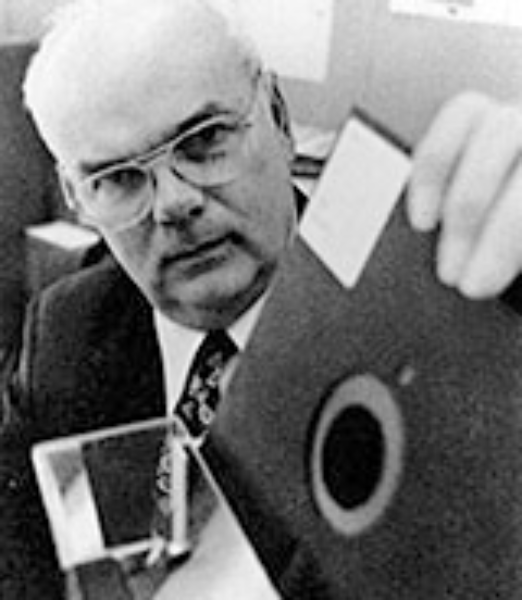
Photo credit: https://alumni.rpi.edu/s/1225/alumni/index.aspx?sid=1225&gid=1&pgid=1408
David Noble is considered “The Father of the Floppy Disk” after he led the development team at IBM in 1967 which created the 8-inch flexible floppy disk. Up to that time the software program and the data entry were provided to the computer using punched cards. Not only did he invent the saving medium but also designed the plastic case for it, which had a mechanism of fabric for removing dust particles when rotating. Ultimately this led to a widespread acceptance of the floppy disk and became a universal symbol for saving files.
Jef Raskin (1943–2005)
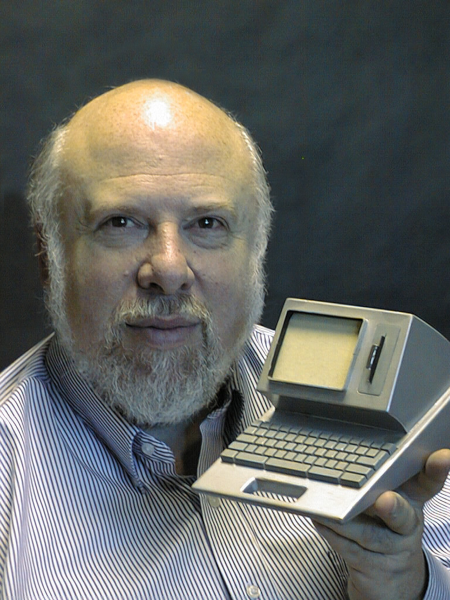
Photo credit: https://commons.wikimedia.org/wiki/File:Jef_Raskin_holding_Canon_Cat_model.png
Jef Raskin was a computer-human interface expert and he is best known for conceiving and starting the Macintosh project at Apple in the late 70s. This was Apple’s third microcomputer after Apple I and II and Raskin was described as “the one who provided the powerful vision of a computer whose legacy would be low cost, high utility, and a groundbreaking friendliness”. The machine he envisioned was very different from the Macintosh that was eventually released and had much more in common with PDAs than modern desktop-based machines. He ultimately left Apple in 1982 and focused on developing his original Macintosh idea so he formed Information Appliance Inc.
The term PDA was first used on January 7, 1992 by Apple Inc. CEO John Sculley at the Consumer Electronics Show in Las Vegas, Nevada, referring to the Apple Newton.
Mark Weiser (1952–1999)
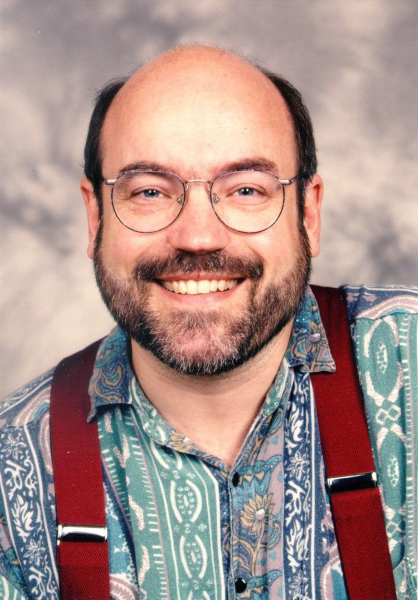
Photo credit: https://alchetron.com/Mark-Weiser
Mark Weiser was the CTO of Xerox and is considered to be the “Father of Ubiquitous Computing”. He was a visionary and computer pioneer, and his ideas have influenced many of the world’s leading computer scientists. Ubiquitous computing is a concept in software engineering, hardware engineering, and computer science where computing is made to appear anytime and everywhere. In contrast to desktop computing, ubiquitous computing can occur using any device, in any location, and in any format. He coined the term in 1988. This concept and vision respectively gained more importance starting with the era of the Internet of Things.
The most profound technologies are those that dissapear. They weave themselves into the fabric of everyday life until they are undistinguishable from it. — Mark D. Weiser
James Rumbaugh, Ivar Jacobson, and Grady Booch
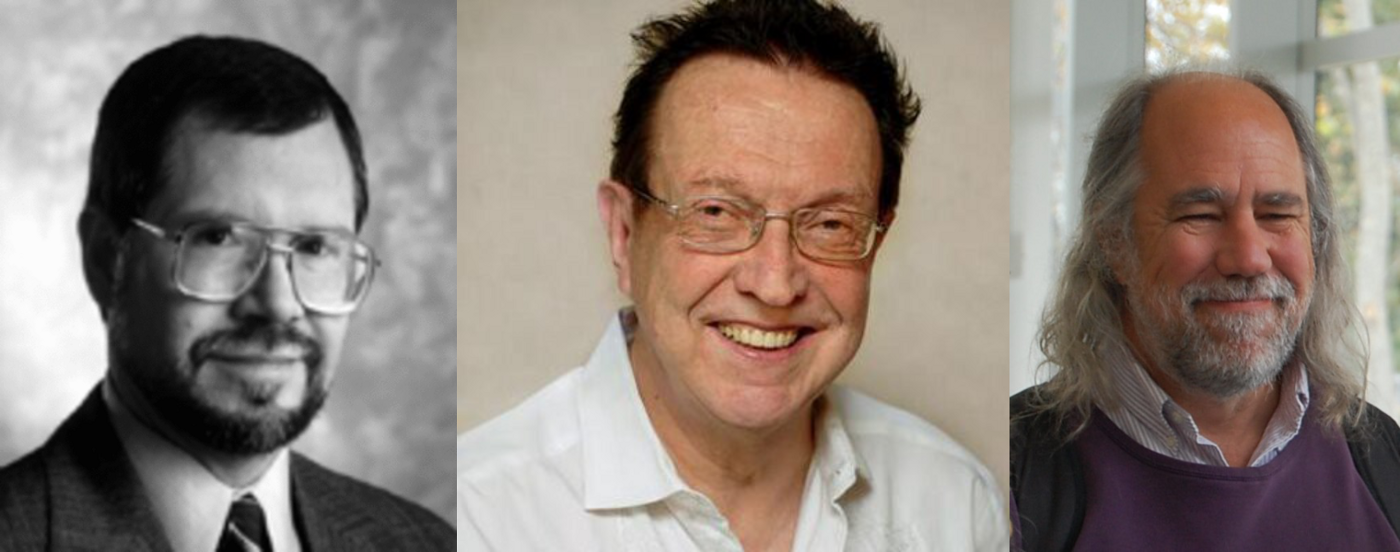
Photo Credit: Timetoast, Twitter, Wikimedia Commons
Grady Booch is a software engineer best known for developing the Unified Modeling Language (UML) with Ivar Jacobson and James Rumbaugh. UML is a general-purpose, developmental, modeling language in the field of software engineering that is intended to provide a standard way to visualize the design of a system. It provides a static and a dynamic view of a system and it is the standard model used by software architects and designers nowadays when designing complex systems, including embedded systems.
Linus Torvalds (1969)
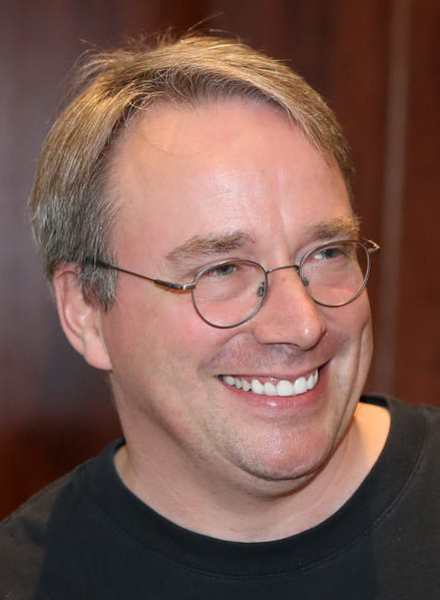
Photo credit: https://commons.wikimedia.org/wiki/File:Lc3_2018_(263682303)_(cropped).jpeg
Linus Torvalds is the inventor of the operating system Linux and maybe one of the most famous persons in the information technology industry. As a software engineer, he created the Linux kernel used by Linux distributions and other operating systems such as Android. Moreover, he is the creator of Git, a version control software that is nowadays a tool used by almost every software engineer. The Linux OS in its different distributions is used more and more in embedded systems, hence in IoT products, because of its broad capabilities, and elegant usability but also because it’s free and open source. Linus is for sure one of the greatest inventors of his generation and the world would for sure be much poorer without his contributions in the area of computer science.
Jaap Hartsen (1963)
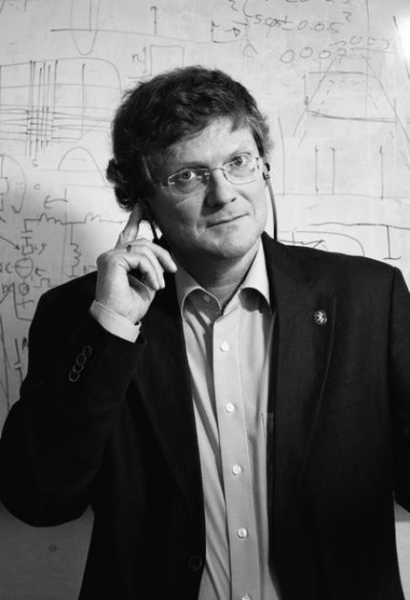
Photo credit: https://www.invent.org/inductees/jaap-c-haartsen
Jaap Haartsen is an electrical engineer and a researcher and he led the foundation for the system that was later known as the Bluetooth Wireless Technology. This achievement was done around 1997 while working for Ericsson in Sweden. In today’s world, Bluetooth technology is essential for so many IoT products, even though it allows only a short-range connection. Statistically speaking more than one-third of all IoT devices are Bluetooth-enabled.
Andy Stanford-Clark and Arlen Nipper
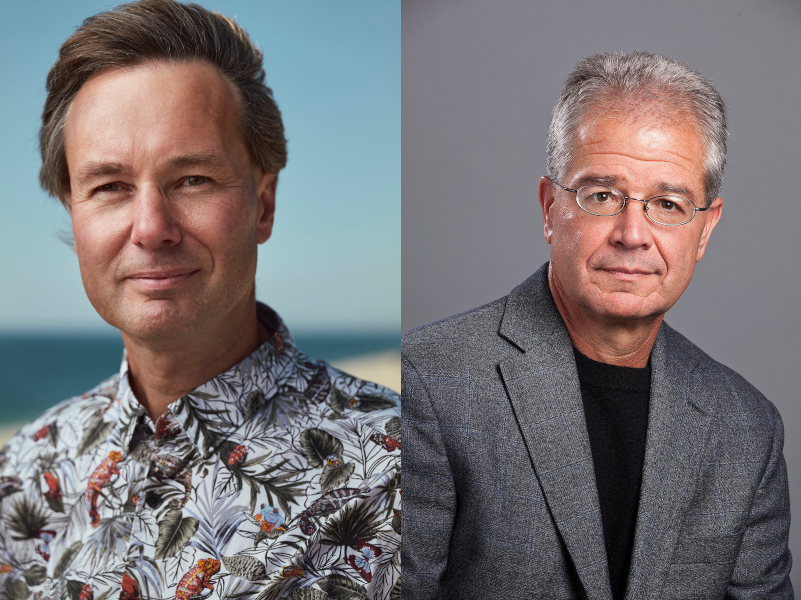
Photo credit: automationworld, plantengineering
Andy Stanford-Clark is an information technology research engineer, who specialized in telemetry and publish/subscribe messaging. Together with Arlen Nipper, they invented the MQTT (MQ Telemetry Transport) communication protocol. MQTT is a specialized protocol enabling telemetry or lightweight-sensor and mobile devices to provide information to computer programs via a publish/subscribe mechanism. This technology gained media attention by the end of the 2000s when he connected his home automation system via MQTT to Twitter. This communication protocol became a standard messaging protocol for the Internet of Things, because of its lightweight features like low power consumption, small code footprint, and low bandwidth consumption.
Kevin Ashton (1968)
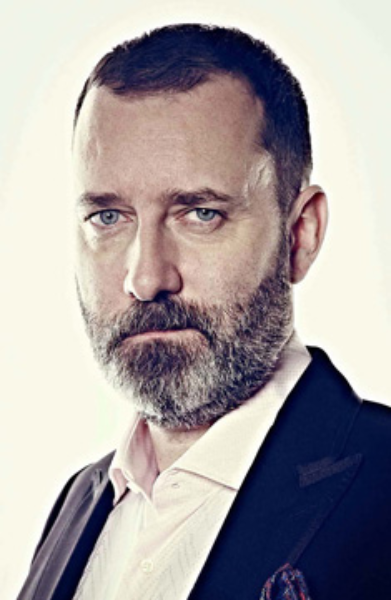
Photo credit: https://www.hanser-literaturverlage.de/autor/kevin-ashton/
Kevin Ashton is a technology pioneer who worked and had major contributions in the area of RFID (radio frequency identification) and sensors, and he is known for coining the term “Internet of Things” in 1999. He used this term to describe a system where the internet is connected to the physical world via ubiquitous sensors.
Ivan Kravets

Photo credit: LinkedIn
Ivan Kravets is the founder of PlatformIO and SmartAnthil, two open-source projects which should make using microcontrollers easier for such end users that don’t have deep knowledge of electronics and embedded programming. PlatformIO is a professional collaborative platform for embedded development and SmartAnthil is an open IoT system that allows easy control over multiple microcontroller-powered devices, creating a home- or office-wide heterogeneous network out of these devices.
Massimo Banzi, David Cuartielles, Tom Igloe, Gianluca Martino and David Mellis
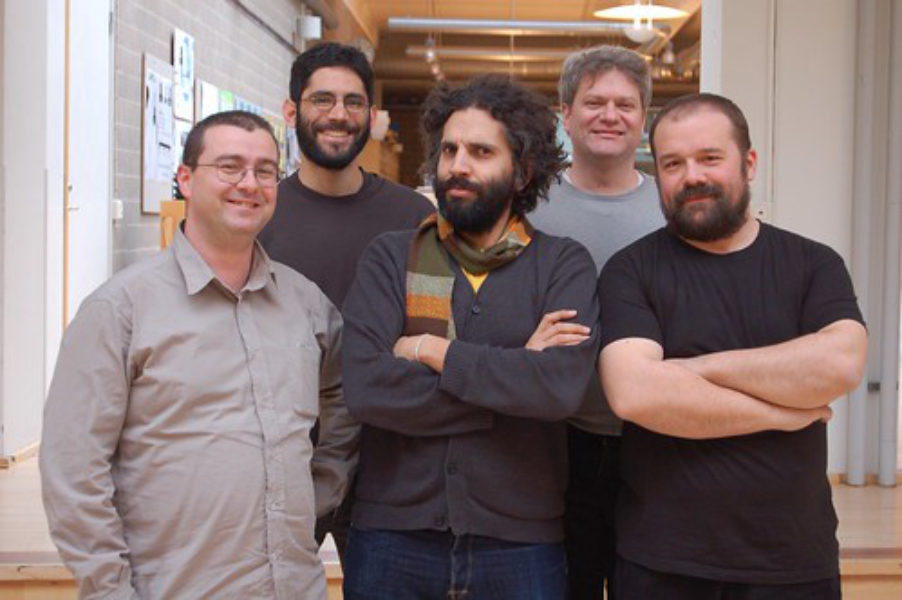
Photo credit: https://blog.arduino.cc/2008/03/26/arduino-summit/
The above-mentioned persons are the creators of Arduino. Arduino is an open-source hardware and software company, project, and user community that designs and manufactures single-board microcontrollers and microcontroller kits for building digital devices. The platform is extremely used by hobbyists and scientists in need of developing a prototype or a concept fastly. Arduino is also used in schools and universities for educational purposes and allows students to be creative and invent the things of tomorrow.
Outlook
Maybe the number of patents issued each year hasn’t changed much, but the introduction of fundamentally new classes of technology seems rarer now than it was in the past. In the past, it was “easier” to invent a breathtaking technology by a single person than it is today. Technology became highly complex nowadays and for achieving groundbreaking results a bigger team is needed, as we have seen in recent times through inventions like the digital camera, the evolution of the modeling languages, and the Arduino project.
Also compared to the past, nowadays people get the needed information in a matter of seconds and use more and more electronic devices in form of wearables or IoT devices as an extension of their body and their natural capabilities respectively. This advantage will be surely used for discovering new things and inventing technologies that will help humanity advance into the future.
One thing is for sure…
Inventors will never die!
Originally this article was published here.



